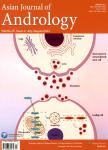Effects of cryoprotectant treatments on bovine sperm function and osmolyte content
冷冻保护剂对牛精子功能和渗透压的影响作者机构:Centre of Reproductive Medicine and Andrology of the University Clinic Miinster D-48149 Germany Department of Obstetrics and Gynecology Faculty of Veterinary Medicine Gadjah Mada University Yogyakarta 55281Indonesia Department of Public Health Faculty of Veterinary Medicine Gadjah Mada University Yogyakarta 55281 Indonesia
出 版 物:《Asian Journal of Andrology》 (亚洲男性学杂志(英文版))
年 卷 期:2009年第11卷第5期
页 面:571-582,I0002,I0003页
核心收录:
学科分类:0710[理学-生物学] 07[理学] 071008[理学-发育生物学]
基 金:This work was funded by the Alexander von Humboldt Foundation 德国德意志研究联合会(DFG)资助
主 题:cryoconservation cryoprotectants osmotic swelling regulatory volume decrease
摘 要:The hypothesis that addition and removal of cryoprotectants to and from spermatozoa would initiate regulatory volume decrease, and lead to osmolyte loss and reduced sperm function, was tested. Common cryoprotectants, in the absence of freezing and thawing, affected bovine ejaculated spermatozoa by lowering their total and progressive motility in medium, reducing their migration through surrogate cervical mucus, damaging sperm head membranes and inducing sperm tail coiling. Sperm function was slightly better maintained after cryoprotectants were added and removed in multiple small steps rather than in a single step. The intracellular content of the polyol osmolytes, D-sorbitol and myo-inositol, exceeded that of the zwitterion osmolytes, L-carnitine and L-glutamate. Certain cryoprotectants reduced intracellular L-camitine and L-glutamate concentration but not that of myo-inositol or D-sorbitol. Multistep treatments with some cryoprotectants had advantages over one-step treatments in mucus penetration depending on the original amount of intracellular camitine and glutamate in the spermatozoa. Overall, sperm quality was best maintained by multistep treatment with glycerol and propanediols that were associated with decreased intracellular glutamate concentration. Bovine spermatozoa seem to use glutamate to regulate cryoprotectant-induced cell swelling.



